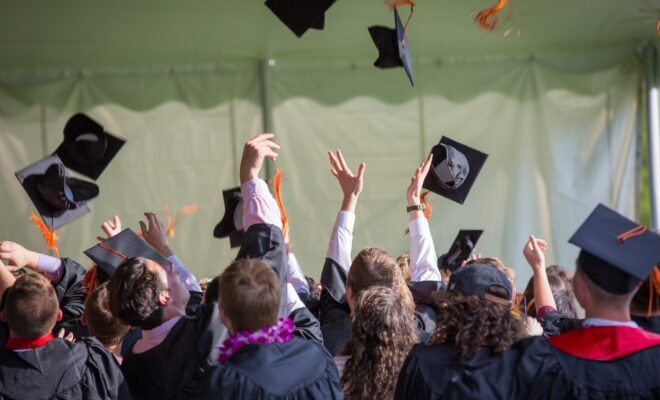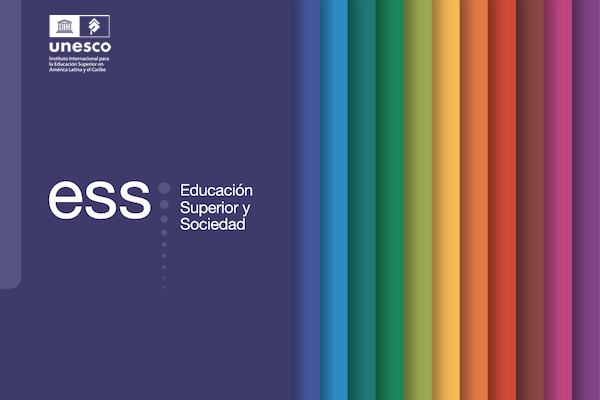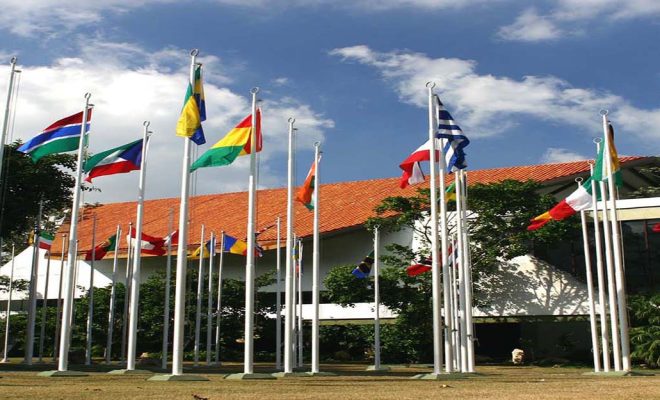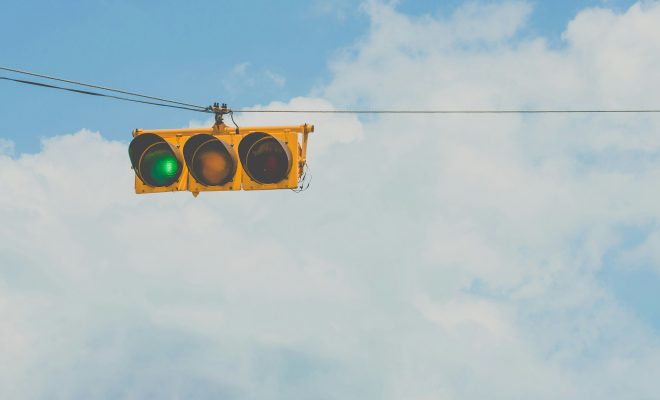Day 2 – Members of the Governing Board addressed challenges of higher education in Latin America and the Caribbean
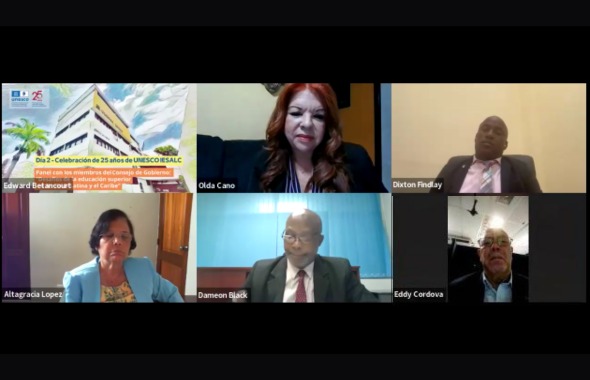
On the second day of UNESCO IESALC’s anniversary week, an online webinar was held for members of the Institute’s Governing Board to reflect on the contributions of higher education in Latin America and the Caribbean in the framework of the Institute’s 25 years of work in the region.
Participants included Olga María Cano de Araúz of Panama, Academic Vice Rector of the Universidad Autónoma de Chiriquí; Dixton Findlay, Deputy Director for Education at the Ministry of Education of Saint Vincent and the Grenadines; María Altagracia López of the Dominican Republic, Academic Vice Rector of the Instituto Tecnológico de Santo Domingo; and Eddy Córdoba, Deputy Director to the Permanent Secretariat of the National Council of Universities of Venezuela, under the moderation of Dameon Black, Commissioner and Executive Director of the Jamaica Tertiary Education Commission.
The discussion focused on priorities with respect to the higher education agenda emerging from the UNESCO World Higher Education Conference, held in Barcelona Spain in 2022: academic mobility and international cooperation based on the commitment to work for the ratification of the New Regional Convention on the Recognition of Studies, Diplomas and Degrees in Higher Education in Latin America and the Caribbean; raising the bar on quality; the struggle for the right to higher education, as it involves issues of access and equity; and fostering innovation, indicated Dameon Black, president of IESALC’s Governing Board, at the beginning of the conversation.
The panelists exchanged opinions on three questions regarding the achievements and challenges for higher education in the region, and then, from a prospective perspective, on IESALC’s contribution to the future of higher education in the region and the global world.
For Altagracia López, the main achievement of higher education in the region in these 25 years is the accelerated expansion of enrollment, which has had consequences such as the integration of professors without pedagogical credentials. “Access is not enough. We have the great challenge of working for permanence and graduation. On the other hand, despite the fact that women occupy 50% of enrollment in higher education, this feminization does not translate into entry into scientific or STEM careers or decision-making positions in higher education. There is a gap to close,” she said.
The Caribbean view was provided by Dixton Findlay, who explained the higher education situation in St. Vincent and the Grenadines, where the University of the West Indies managed to establish an Open Campus only in 2007. This has greatly helped to expand the number of people who have had the opportunity to access higher education, something that did not exist in the 1980s. “With the change of government in 2001, greater focus was given to education and a policy we call the Education Revolution was developed, which has increased access at all levels in St. Vincent and the Grenadines from pre-school to tertiary level,” he said.
The Institute’s director, Francesc Pedró, spoke to highlight three contributions of IESALC in the last 25 years. Firstly, as a platform and driving force for political dialogue on higher education in the region, highlighting the role of the Regional Conferences on Higher Education, which have managed to forge a consensus around the idea that higher education is a public and social good that necessarily implies the participation and leadership of the States and that all its development must be based on their autonomy.
He also highlighted the Institute’s role in capacity building, which in recent years has had an impact on 20,000 people and, finally, the third contribution of research or policy analysis to the dissemination of good practices. “The findings on what is working to ensure that higher education not only has greater quality, greater equity, is more inclusive, but also, at this time more than ever, is a tool firstly for peace building and secondly, an instrument for greater sustainability”.
Regarding the impact of the pandemic, Olga María Cano de Araúz spoke of how Panamanian universities went from having suspended enrollment for almost two years, to increasing student enrollment with the incorporation of students from other parts of the country and the world. “When we opened this virtuality, there was no face-to-face mobility. Currently we have almost 40% more students than we had before the pandemic. This is what happened in different universities in Central America and probably in Latin America”.
This opening of access to education also included the most vulnerable sectors with difficult access to the Internet, implementing distance education with instruction modules, with participation in open online programs in other regions of Latin America. Similarly, collaborative research networks were activated and more articles were generated, the quality of online education was improved and hybrid education came to benefit universities with physical space limitations. This has implied the improvement of the quality of higher education with the accreditation of more than 35 universities in Panama.
“In the Bolivarian Republic of Venezuela we are developing the purpose of making university education a public good, a human right, as established in our Constitution,” said Eddy Cordoba in his speech. As a permanent challenge, he proposed to avoid the growing privatization of university education, as well as to take measures so that the digital transformation of this educational level does not become a “new market of information and communication technologies”, which is difficult to access for many countries with high levels of inflation, conflict and world poverty. He also called for interactive and productive dialogue as a principle to build and promote quantitative changes in our societies.
Regarding the challenges of sustainability, concern arose about issues such as mining and its impact on the environment and climate change affecting the region and the need to deepen in cross-cutting practices linked to implement it in universities. “In Panama we are trying to manage the reduction of carbon emissions, waste management, energy efficiency, and the incorporation of this sustainability within the curriculum, within the creation of programs and courses related to sustainability, climate change and environmental conservation, at the country level with other universities and NGOs linked to sustainability and climate change,” said Cano.
In closing, the moderator shared his vision of the role that the Institute should have going forward: it needs to continue to be recognized as a clearinghouse between regions, building capacity in Latin America and the Caribbean, a region where we share challenges such as poverty reduction, healthcare, the environment, sustainability and economic growth. “The Institute has a role to continue to play in providing that evidence-based advice, advising governments to work in a data-driven way. The Institute has an important role to play in that development, focusing on higher education and what we can do to ensure that Latin America and the Caribbean can compete and that our graduates are globally competent. Finally, I would like us to also ensure that the Institute continues to work for the harmonization of higher education standards to promote academic mobility in the region.”
Other activities:
Video with historical highlights of the 25 years of activities at UNESCO IESALC
UNESCO’s International Institute for Higher Education in Latin America and the Caribbean, IESALC, will reach its first quarter century on November 4, 2023. It has been 25 years full of constant challenges that have served to promote higher education as a transforming force of our societies towards a better world. This video highlights the main milestones of its journey towards the development of education with greater relevance, equity and quality for all the people.
Virtual chronology of UNESCO IESALC
Launching of the virtual chronology of UNESCO IESALC, with the milestones that have marked its history. Watch it here.
RELATED ITEMS
